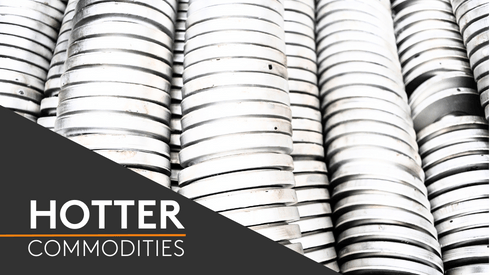The company announced adjusted earnings before financial items, tax, depreciation, and amortization (EBITDA) of NOK 3.74 billion ($352 million) in the fourth quarter of 2023, falling by 48% from NOK 7.18 million during the same period of 2022, with Hydro attributing losses largely to lower aluminium and alumina sales prices and reduced extrusion and recycling volumes.
But despite a significant decline in European energy prices, chief financial officer Pål Kildemo told Fastmarkets that weak demand remained the key factor preventing curtailed capacity from coming back online.
Combined capacity at Hydro Karmoy and Hydro Husnes in Norway was temporarily reduced by 110,000-130,000 tonnes in 2022 as a result of weak demand and high European energy costs, but the company noted that it was unlikely to see a return in production while demand remained subdued.
“For the industry as a whole, we often refer to the spread for an average European smelter based on the difference between the [London Metal Exchange aluminium price], premium, raw materials and power, and that is actually now not in a very negative territory,” Kildemo said.
“With the big fall in energy prices across the continent, smelter margins don’t look to be struggling with profitability to the same extent as [they] did half a year ago for example.
“The biggest issue with [bringing back curtailed production] is that you don’t have anywhere to place your metal.
“For us, it would make perfect economical sense to restart our capacity in Norway, but we don’t have anywhere to sell it.
“We are already in an oversupplied [value-added product] market, which forces us to close down recycling capacity which is impacting the low margins, and we need to see a pickup in something before any capacity gets brought back,” he added.
European consumption of extruded products fell by 14% to 713,000 tonnes in the fourth quarter of 2023, compared with 831,000 tonnes in the fourth quarter of 2022, according to statistics compiled by Hydro in its recent financial results.
Premiums for primary aluminium P1020 and aluminium billet have found support in the first few months of 2024, but remain significantly lower year on year after recording a consistent decline across the second half of 2023 on low global demand.
Fastmarkets assessed the aluminium 6063 extrusion billet premium, ddp North Germany (Ruhr region) at $400-440 per tonne on February 9, up from $345-390 per tonne at the beginning of 2024, but remains 24% lower than $550-610 per tonne on February 10, 2023.
Fastmarkets assessed the aluminium P1020A premium, in-whs dp Rotterdam at $240-255 per tonne on February 13, rising from $190-215 per tonne at the beginning of the year, but 18% lower than $290-310 per tonne on February 10, 2023.
“It is hard to predict the uncertain geo-political and macro situation, but we don’t currently see any major pickup in the first half [of the year],” Hydro’s chief executive officer Hilde Merete Aasheim told Fastmarkets.
“As a base case, we expect that things could improve in the second half and that is what we have planned for.
“But for us, the main focus is on maneuvering in the short term as well as being active on mitigating measures in order to handle the low market,” she added.
To understand the complex market conditions influencing price volatility, download our monthly base metals price forecast, including the latest copper price forecasts today. Get a free sample.





